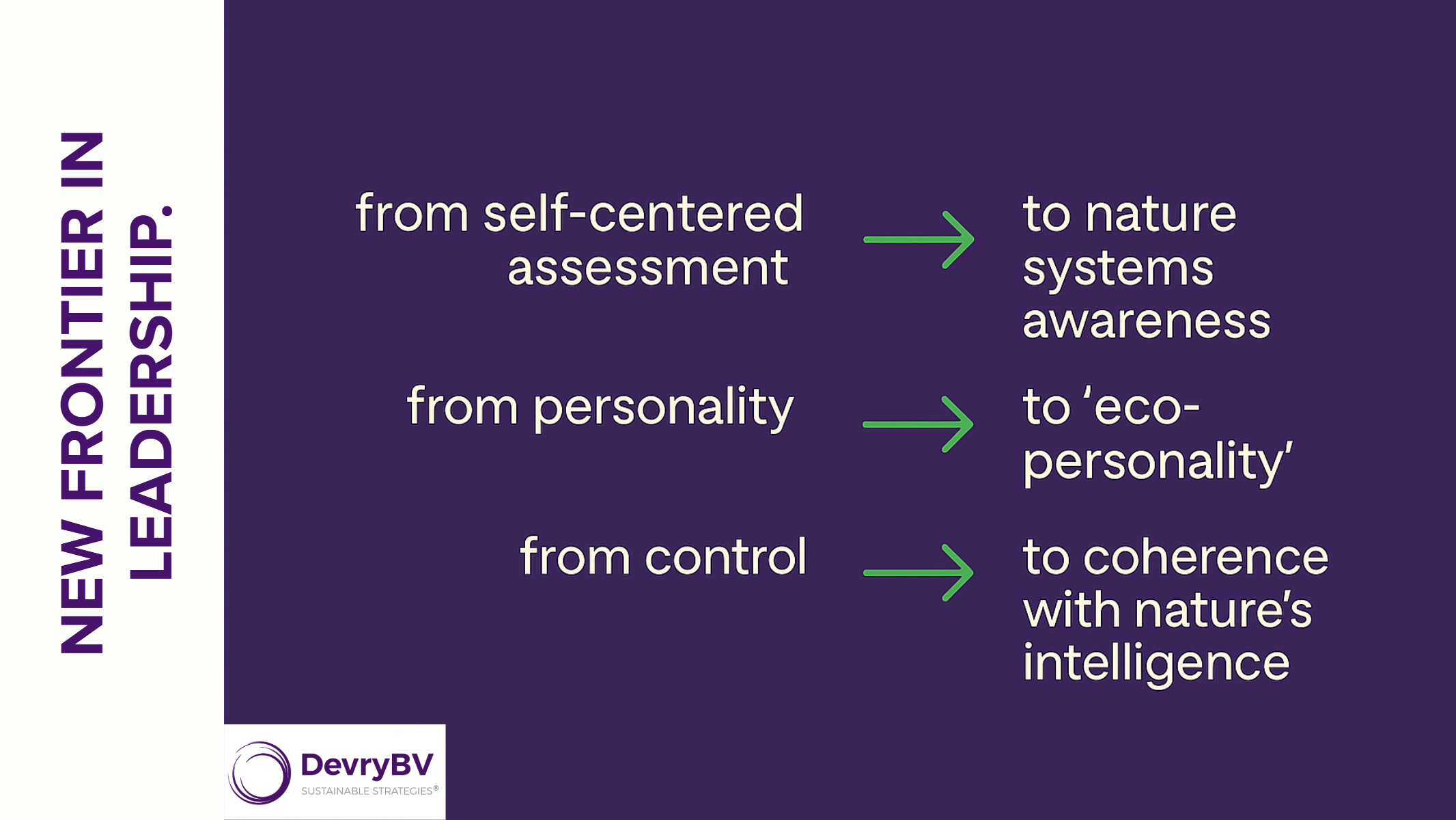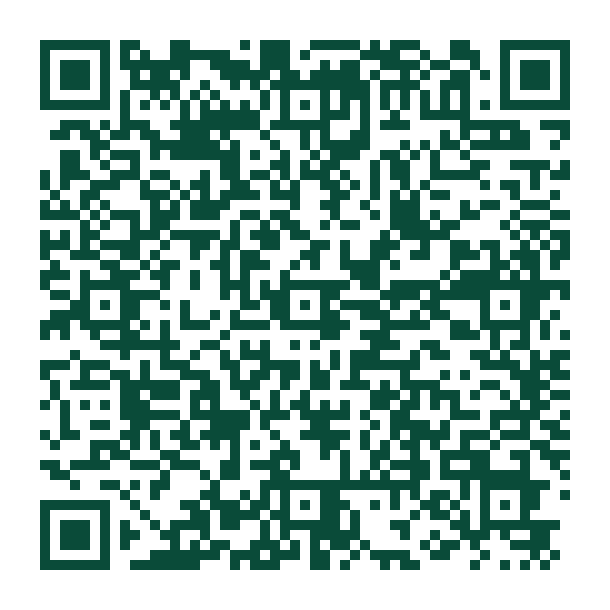What Would Nature Do?
At the Biomimetics International Conference this week, as an Advisory Board Member, I witnessed a global convergence of thinkers and innovators brought together under the leadership of its Executive Director, Michael Wright, using one timeless compass: nature itself. From restorative economies to swarm intelligence, from regenerative chemistry to biomimetic cities, the message was clear—the blueprint for innovation is already written in the living world.
My own session, “What Would Nature Do?”, explored what happens when leadership begins not with control or quarterly reports, but with observation, adaptation, and stewardship.
The Colossal Disconnect Between Leaders and Nature.
Executives today face a profound paradox: they are expected to lead sustainably but are largely disconnected from the very systems that define sustainability. Leadership has become indoor, data-driven, and disembodied. The result is what I call the colossal nature disconnect—a gap between the intelligence of our environments and the decision frameworks inside most companies and organizations.
Scientific research confirms this distance has real costs. A landmark study in Scientific Reports found that individuals who spend at least 120 minutes per week in nature experience significant improvements in health, well-being, and cognitive performance. Under that threshold, benefits largely disappear. For leaders, that means 15 minutes a day outdoors isn’t leisure—it’s leadership hygiene. Nature restores focus, reduces stress, enhances creativity, and fosters clarity and informed decision-making.
If we want companies that are regenerative and resilient, we need executives who are too.
risks to business and nature are monumental.
Business activity poses immense risks to the natural environment. Biomimetics shows businesses a better way, that it is possible to learn from nature, not extract without giving back. Here is a brief categorization of the challenges society faces and why turning to biomimetics is essential. Companies have mechanisms to address environmental risks, yet risks are mounting.
Why Corporate Change Efforts Fail—and What Nature Teaches Instead.
Modern corporations are designed for “evergreen change management,” and most sustainable transformation efforts fail because executives resist embracing living-system logic. Profit models, incentives, budget processes, shareholders, stakeholders, and organizational structures often contradict the values companies claim to support.
Nature, however, shows us another way:
Rooted in shared values and community.
Responsive to changing conditions.
Generative in creating options and resilience.
Regenerative—returning more than it takes.
A tree doesn’t have meetings or quarterly filings, yet it thrives through rootedness, adaptability, and reciprocity. Imagine if companies—and their leaders—operated on those same principles.
From Individual Assessment to Eco-Personality.
For decades, leadership development has relied on tools such as the Myers-Briggs, DISC, and lately Enneagram assessments. Leadership assessments often measure personality traits, motivations, communication styles, psychological tendencies, and similar characteristics, and they primarily focus on the individual as the system.
The next frontier of corporate executive assessments is the eco-personality: a leadership assessment that measures coherence with nature’s intelligence rather than self-perception and effectiveness in the corporate setting. Eco-leadership depends on the leader’s ability to interpret, respond, and operate within living systems.
This shift moves leaders:
An eco-personality leader knows how to read signals, metabolize disturbance, embrace seasonality, and prioritize reciprocity. In short, they lead like ecosystems do—by cultivating balance, adaptability, and mutual growth.
Bridging the Nature-Tech Divide: The Leadership Nature Palette.
To help leaders connect personally and practically with the natural world, I introduced the Leadership Nature Palette—a bridge between biophilia and business intelligence. It’s a process that helps executives recall formative experiences or recent interactions with nature and then translate them into a color, texture, and emotional vocabulary they can carry into daily leadership practice.
The Nature Palette works on multiple levels:
Visual + Tactile: Engage with the textures and colors of soil, bark, leaves, and light.
Digital: Use an AI-assisted tool to ground decision-making in nature’s principles.
Memory + Recall: Surface memories of places, plants, and other elements of nature that shaped your sense of self and stewardship.
Personal: Keep nature’s leadership presence alive in daily practice.
Leaders begin by reflecting on nine prompts—like the plant that defined their childhood, the landscape that gives them strength, or the element that mirrors their current energy. The result is a personalized poetic palette that becomes a leadership compass. In addition, leaders get a palette of natural colors unique to them, along with a visual they can screenshot or print.
The nature palette exercise can be an ongoing opportunity for leaders to dig deeper and more strategically reflect on the merits of nature’s lessons in leadership. Use this QR code to access the Nature Palette survey.
I’ve created multiple pallets that provide me with real-time inspiration for a day that has guided some of my responses. For example, while I love the praying mantis memory from my childhood of me watching them walk and stop and think, I don’t always operate with that slow of a pace and deliberate tendency in my everyday work life, so reminding myself to slow down and evaluate the timing of my actions is incredibly helpful. Here was the first nature palette that I created:
“The Willow of the Pacific.
Rooted like the Mulberry Tree, I draw sweetness from deep memory and resilience from my youth. The Praying Mantis guides my leadership with stillness and precision—timing as wisdom. I sway with the grace of the Weeping Willow, grounded yet fluid, meeting life’s winds with quiet strength. The Pacific Ocean moves through my spirit—vast, calm, and fierce when called upon to protect what matters most. From the Gabilan Mountains, I inherit perspective—to rise above challenge and see the long view. Through running, I embody motion—forward, rhythmic, attuned to the heartbeat of the land. Nature whispers encouragement: “Keep fighting for me. You’re trying your best.” With Earth as my element, I hold the steady pulse of stewardship, cultivating renewal with every step. My legacy dreams of biodiverse forests, clean waters, open skies, and fertile soil—a world where balance endures.”
Share Your Nature Palettes with Us on LinkedIn.
To spark inspiration for others, share your nature palette and tag our DevryBV company page. Here is a sample of the visual palette that you can create with our tool. This one comes from a session where I reflected on some of my favorite memories from my time growing up in Southern California.
I really can’t wait to continue creating new palettes inspired by the interactions I have had with nature throughout my lifetime.
The Stewardverse: Nature as a Corporate Value.
At DevryBV Sustainable Strategies, we introduced the Stewardverse®—a leadership framework designed to help organizations adopt Nature as a corporate value, not a side initiative.
I was thrilled to share at the conference that The Stewardverse® is now a registered trademark, formalizing a leadership concept we already use with clients to embed stewardship into a company’s financial and operational systems, supply chains, governance, communications, brand, and culture. The Stewardverse Materiality Approach maps the company’s impact on the “whole house” of business, people, and nature and surfaces truths about both positive and negative externalities, shared systemic and material risks, and the lived realities of people and nature from their business—making biomimetics both a risk mitigation, revenue generation, and profit tool for companies.
Our vision is for companies worldwide to adopt the Stewardverse® as a corporate value, aligning business with nature’s regenerative laws.
Leadership Lessons from Biomimetics International.
Across the conference, one theme resonated: innovation rooted in living systems scales more equitably, fails less, and regenerates more.
Industry: Target Corporation shared how design-led innovation can be both equitable and regenerative, embedding sustainability throughout the entire supply chain, from cotton sourcing to recycling.
Economy: Yorth Group reframed ROI by quantifying negative externalities and investing in proactive systems change.
Technology: Microsoft’s “High Nature, High Tech” initiative reimagined data centers as ecosystems that cool, filter, and regenerate when adapted to the specific Biome where it is built.
Science: DARPA revealed organic computing and self-healing materials—biology entering the tech frontier.
Cities: Tom Fisher reminded us that cities thrive as lattices, not hierarchies—mirroring natural networks.
Collective Intelligence: Unanimous AI demonstrated swarm decision-making that outperformed individuals and crowds alike.
Nature’s Lesson of Scale.
One of the most profound takeaways came from Prasad Boradkar, who asked a simple but transformative question: Does scaling happen in nature—and if so, how?
In ecosystems, scale isn’t replication—it’s adaptation. Cells, tissues, and organisms grow through built-in limits, feedback loops, and external regulation. Ecosystems evolve through succession, disturbance, and energy flow, achieving balance through diversity, not uniformity.
Prasad enlightened us on isometric scaling (where everything grows uniformly) to allometric scaling (where form and function evolve differently to sustain balance). Most compelling: growth, in nature, deforms structure—and that’s not a flaw, it’s a feature.
His call to action: treat scaling not as expansion, but as adaptation. Optimize internal networks, embrace differentiation, and let growth be responsive to context. In Stewardverse leadership terms, that means right-sizing ambitions, localizing solutions in consideration of natural ecosystems, and growing only what strengthens the ecosystem as a whole.
Moving from Biomimetic Metaphor to Useful Leadership Mechanism.
For leaders ready to begin this biomimetics journey:
Ask the question. Make What would nature do? a standing prompt in strategic decisions.
Re-dose with nature. Spend at least 120 minutes a week outdoors and track how clarity, creativity, and calm increase.
Build your Nature Palette. Use the reflective prompts to create a shared team palette that reconnects memory, meaning, and mission.
Adopt eco-personality metrics. Evaluate leadership by coherence with living systems, not just competencies.
Institutionalize stewardship. Embed The Stewardverse® framework into governance and culture so nature becomes a metric, not a metaphor.
A Final Thought.
Nature doesn’t separate strategy from soul. It grows in patterns of reciprocity, balance, and renewal. If we bring those same principles into our leadership and our systems, business can evolve beyond sustainability toward regeneration.
If a tree were your CEO, how would it lead?
That’s not philosophy. That’s the new frontier of eco-leadership.
Mother Nature in her element: nature.






